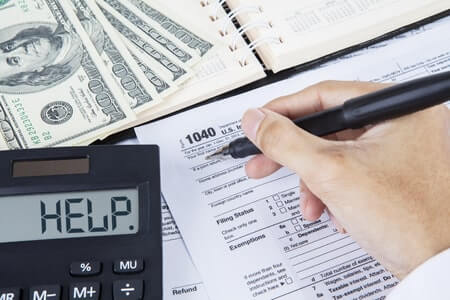

Schedule B is an attachment to your Form 1040 that calculates your interest and ordinary dividends to see if you will owe taxes on your earnings. In this article, we will go over the basic Schedule B requirements and filing information to help you determine if you need to utilize one.
The Basics
Schedule B reports any interest or dividends you earn during the tax year. The Schedule has three sections: (1) Interest; (2) Dividends; (3) Foreign Accounts. You report your earnings in the corresponding section of Schedule B. The aggregate amounts are then reported in other areas of your tax return to calculate if you owe taxes on your earnings.
Filing Requirements
You must file a Schedule B is you meet certain requirements. Some of these requirements include:
- You have over $1,500 in taxable interest or ordinary dividends.
- You are the recipient of interest from a seller-financed mortgage and the buyer utilized the property as their personal residence.
- Bond interest has accrued.
- You have a Form 1099-OID but you are reporting a different Original Issue Discount amount than what is on the form.
- You were the recipient of interest or ordinary dividends as a nominee.
There is a full list of requirements at IRS.gov.
What to Look For
If the requirement list still leaves you scratching your head, there are some additional clues you can look for. The companies that pay you interest and/or dividends will report your earnings to the IRS. They do this with the Form 1099-INT for interest and 1099-DIV for dividends. A copy of this is also mailed to you so that you can report your earnings to the IRS. If you receive a 1099-INT for 1099-DIV you may need to file a Schedule B to report those earnings. Some people need to file one just from the interest they earn on their bank accounts during the year.
Completing Schedule B
First, you will need to gather all your tax documents related to your investment earnings. You will then need to list each payer of interest and the amount paid on Schedule B. The amount of interest is then totaled, and the balance is reported in other areas of your tax return.
Second, you will need to gather all your dividend related tax documents. Each payer and dividend amount will need to be listed. You will report the total elsewhere on your tax return.
Lastly, if you had a foreign account or a foreign trust you will need to report that on Section 3. If you have received any earning or distributions, you may need to complete additional forms.
Schedule B and You
If you are unsure if you need to utilize a Schedule B or you do not feel comfortable filling one out, meet with a qualified tax preparer who can help you through the process.
Questions? Want to schedule an appointment? Contact us by clicking here.
